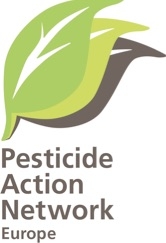Feedback mechanism of Commission’s Health Directory (DG Sante) on the proposed Endocrine Disrupting Chemicals (EDC) criteria published in June 2015[1].
PAN Europe's response
The Plant Protection Product Regulation 1107/2009 is a mutual agreement among the European Parliament, the European Council and the European Commission (COM), which recognises that pesticides “may involve risks and hazards for humans, animals and the environment” (rec 7) and aims to ensure “a high level of protection of both human and animal health and the environment” [Art 1(3)]. According to the Regulation “particular attention should be paid to the protection of vulnerable groups of the population, including pregnant women, infants and children” (rec 8). This is extremely relevant for EDCs that have the capacity to alter the endocrine system of young organisms and lead to permanent adverse effects and diseases. The “high level of protection” is achieved by applying the precautionary principle (PP) [Art 1(4)] i.e. if there is evidence that a chemical may cause harm to humans and the environment but there is a lack of scientific consensus, then this chemical must be banned from pesticide products.
For PAN Europe the COM has gone beyond its mandate and has changed the regulatory text to provide a set of weak criteria that will capture only a very small number of EDCs, if any and will fail to fulfil the purpose of PPPR.
An unreasonably high and unclear burden of proof is now required to identify a substance as an EDC. Both the adverse effect in humans or non-target organisms and the endocrine mode of action (MoA) that gives rise to the adverse effect must now be known.
This is not in line with the PPPR that aims to protect humans, and the environment from the adverse effects caused by EDCs regardless their MoA and is also not in line with endocrine research that shows that the MoA even for some very documented EDCs takes years to reveal (e.g. DES).
The change in the text (deleting the word “may” from “may cause adverse effects”), to regulate only known EDCs is not in line with the aim of PPPR.
The criteria do not define what “known to cause an adverse effect relevant to humans” or for non-target organisms “relevant at the population level” means leaving room for misinterpretation. Will the data requirement of 283/2013 be enough? Or no action will be taken for years until “adequate” testing methods are developed?
The criteria do not reflect the WHO definition which highlights that known or presumed and potential endocrine disruptors are of concern and that EDCs cause a change in endocrine function rather than an endocrine MoA.
The criteria lack categories compared to other hazard classes of PPPR and CLP, where known, presumed and suspected (category 1A, 1B and 2 respectively) mutagenic, carcinogenic and toxic to reproduction chemicals are recognised for regulatory purposes.
The criteria don’t embrace the PP that requires action to be taken when there is some doubt.
The criteria give industry protocols a priority and exclude all the endocrine disrupting research that has not been established in international protocols yet.
According to the PPPR, Carcinogens Cat 1A and B, Toxic to Reproduction 1A and B and EDCs that may cause adverse effects, may still be used in agriculture if exposure is negligible, defined as “used in closed systems or in conditions excluding contact with humans and where residue levels don’t exceed the default value [of 0.01 mg/kg (or less)] as food residues”. But the new text for EDCs allows the use of EDCs if the “risk” is negligible, “in particular when used in closed systems or in other conditions which aim at excluding contact with humans and where MRLs can be set”.
A full risk assessment is now permitted to set safe “limits of exposure” for EDCs even though there is no scientific agreement on safe thresholds for EDCs (JRC report). This contradicts the aim of PPPR to identify certain classes of chemicals as hazards and refrain from setting ambiguous “safe” levels.
A derogation already exists in case of a danger to plant health (Article 4.7).
MRLs will now be set by the Reg 396/2005, so 10-1000 times more residues may be permitted in our food in comparison to the default 0.01 mg/kg. Pregnant women and babies will continue to be eating these pesticide residues.
[1] http://ec.europa.eu/info/law/better-regulation/initiatives/ares201630718...
